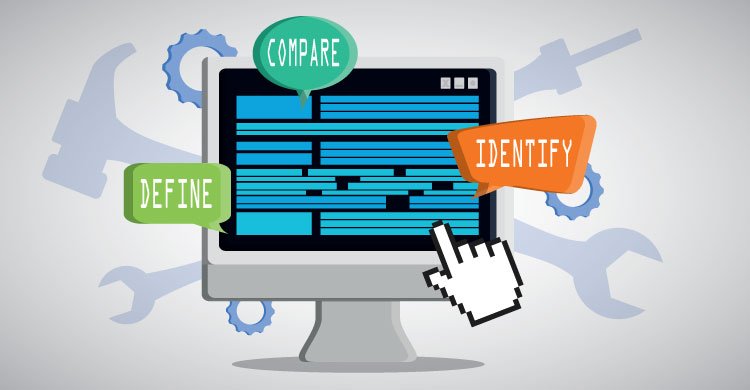Last week, a client I have consulted with for almost a decade asked me a simple question: With a ton of digital tools being embraced by teachers but a limited budget to pay for districtwide subscriptions, how could he be sure that he was making the right choices about which tools to invest in and which tools to walk away from?
That’s an essential question, isn’t it? It’s probably one you’ve had to wrestle with at some point in your professional career.
The truth is that there are a ton of great services being developed for the educational marketplace. But it is equally true that we do have limited budgets. We simply can’t invest district resources into every single tool that teachers believe in, no matter how valuable those tools seem.
The good news is that identifying the right tools to invest in is actually pretty darn easy.
In fact, the best decisions around technology investments can be made by working through three simple steps.
Step One: Clearly define the core teaching and learning behaviors that you want to see happening in your classrooms.
The way I see it, school leaders have two primary responsibilities. First, you must create a clear and compelling vision of general terms like “effective instruction” and “meaningful teaching and learning spaces.”
I ought to be able to ask you to describe what an ideal classroom would look like in action, and you ought to be able to give me specific descriptions. What would teachers be doing in those classrooms? What would students be doing in those classrooms? Why do those behaviors matter to our students and our communities at this point in time? How would technology be used to support the core instructional and learning behaviors you value the most?
Once you’ve developed a clear and compelling vision of the teaching and learning behaviors that you want to see happening in your classrooms, you need to communicate that vision consistently to everyone in your system.
If your principals and teachers have no real sense of what your “ideal classroom” looks like in action, they can’t take proactive steps to create those classrooms on a regular basis. As my good friend Becky DuFour likes to say, clarity precedes competence. You can’t expect meaningful change until people understand exactly what you mean by “meaningful change.”
Need some help developing a clear vision for what meaningful instruction should look like in your classrooms? Here are some planning handouts that I use in workshops that I run:
- Technology Vision Planning – A document that can help school/district leaders to carefully define a technology vision based on their community priorities.
- Technology Vision Statements – A document that can help school/district leaders to develop a set of clear statements defining what effective technology integration would look like in their classrooms.
- Technology Scenario – An example of a scenario that a school/district might develop to communicate a vision of an ideal classroom in action.
Step Two: Identify digital tools that can be used to support the core instructional/learning behaviors you believe in.
Finding digital tools in today’s educational marketplace isn’t the hard part. A simple scroll through your Twitter stream will leave you buried in potential services to spend your money on. And the fact of the matter is that, with rare exception, all of those tools and services can probably improve teaching and learning in some of your classrooms.
That’s why you have to be deliberate about first defining what your priorities are and then identifying specific services that advance those priorities.
Don’t overcomplicate this. Start by creating sets of simple “If, Then,” Because statements detailing the reasoning behind each individual choice that you are thinking about making. Here are a few examples:
- If we believe that teachers should be providing instruction that is carefully targeted to the individual needs of students, then we would invest in MasteryConnect because it automatically tracks and reports progress on classroom assessments by student and by standard.
- If we believe that professional learning teams are the most powerful change strategy in a school, then we would invest in Global PD because it provides comprehensive resources that support learning teams at each individual step of the collaborative process.
- If we believe that intervention efforts in our multitiered system of student supports should begin in the regular classroom, then we would invest in Brainpop because it allows for quick initial reteaching and retesting of core concepts without requiring a ton of additional planning on the part of the classroom teacher.
- If we believe that students must begin to accept ownership over tracking their own progress toward mastering important outcomes, then we would invest in SeeSaw because it allows students of all ages to begin building digital portfolios of artifacts that can serve as evidence of their learning.
Once you’ve developed your initial “If, Then, Because” statements, have teams of teachers and school leaders challenge the service that you’ve linked to in the “then” portion of your statement. Are the services you’ve identified capable of supporting the core behaviors that you say you believe in? Are there other services that do a better job supporting the core behaviors you believe in?
For some extra fun, try to write If, Then, Because statements for the services that you already invest in. You might just find that you are spending money on services that do nothing to support your vision of what good teaching and learning should look like in action. The fact of the matter is if you struggle to write an If, Then, Because statement for a service that you are spending money on, you are probably wasting your cash.
Step Three: Always compare the per-pupil price of services that you are considering to the money that you are spending on other school products.
Whenever I make technology presentations, I nudge school leaders to invest in the paid versions of the services they believe in. That often feels counterintuitive to my audiences, who have grown up in a digital age where we expect every digital product we use to be free. That also feels impossible, given that a school- or districtwide subscription to any service can cost thousands and thousands of dollars.
But there’s good reason to invest in the paid version of services. Perhaps most obviously, the paid version of services often includes additional features that have real value. Often, those features facilitate collaboration between teams of teachers, communication with parents, or tracking of progress at the school and/or district level.
Perhaps most importantly, purchasing the paid version of services can help to ensure that the services you are investing in will be around for the long haul. The simple truth is that digital services are for-profit companies that are trying to make ends meet. If we want them to help us meet long-term district goals, we have to count on them being a part of our instructional/learning practices for a long while. Purchasing the service helps to make that possible.
So how do you justify laying out anywhere from $5,000 to $100,000+ for a subscription to a digital service?
Start by figuring out the per-pupil cost. Chances are, those costs will fall into a range somewhere between three and seven dollars per kid. Then, ask yourself how that three to seven dollars per kid compares to other things schools spend money on.
Is that more or less than your students spend on school-spirit wear? Is it more or less than your students spend on their student planner/agenda for the year? Is it more or less than your students spend on their field trip to the zoo? Is it more or less than your students spend on their fall festival or their field day at the end of the year? Is it more or less than your students spend on admission to a school athletic event or dance?
How does that three to seven dollars per kid compare to the cost of the staff polo shirts that your school buys every year? How does it compare to the cost of the motivational posters that you have hanging up in your building’s hallways every year? How does it compare to the cost of the meals you purchase for your faculties for professional development days?
What you are likely to find is that the services that you need to support the instructional/learning behaviors you say you believe in don’t cost a heck of a lot when you compare them to the cost of other things you are already spending your money on.
If that’s true, start advertising that to everyone in your school community.
Ask teachers if they are willing to forgo faculty polo shirts and staff meals on professional development days in order to invest in services that can help to change instruction and learning in your building. Ask parents if they are willing to sponsor a subscription to a service instead of purchasing a team T-shirt. Ask the PTA if they would consider rolling their yearly fundraiser proceeds into a subscription to a service instead of a campus beautification project or an end-of-year gift from the graduating class.
The fact of the matter is that until schools are fully funded by our state legislatures, our primary goal should be to prioritize our spending on things that can make high-quality teaching and learning more effective and efficient.
We don’t always do that.
Does any of this make sense to you?
Essentially, I’m arguing that schools and districts need to start putting their money where their mouths are when it comes to technology spending. In the words of Richard Elmore, for every new increment of performance that you demand from classroom teachers, you have an equal obligation to provide the time, the tools, and the training necessary to meet those new expectations. That’s impossible when we aren’t making deliberate choices about the digital tools and services we are purchasing.
[author_bio id=”413″]







